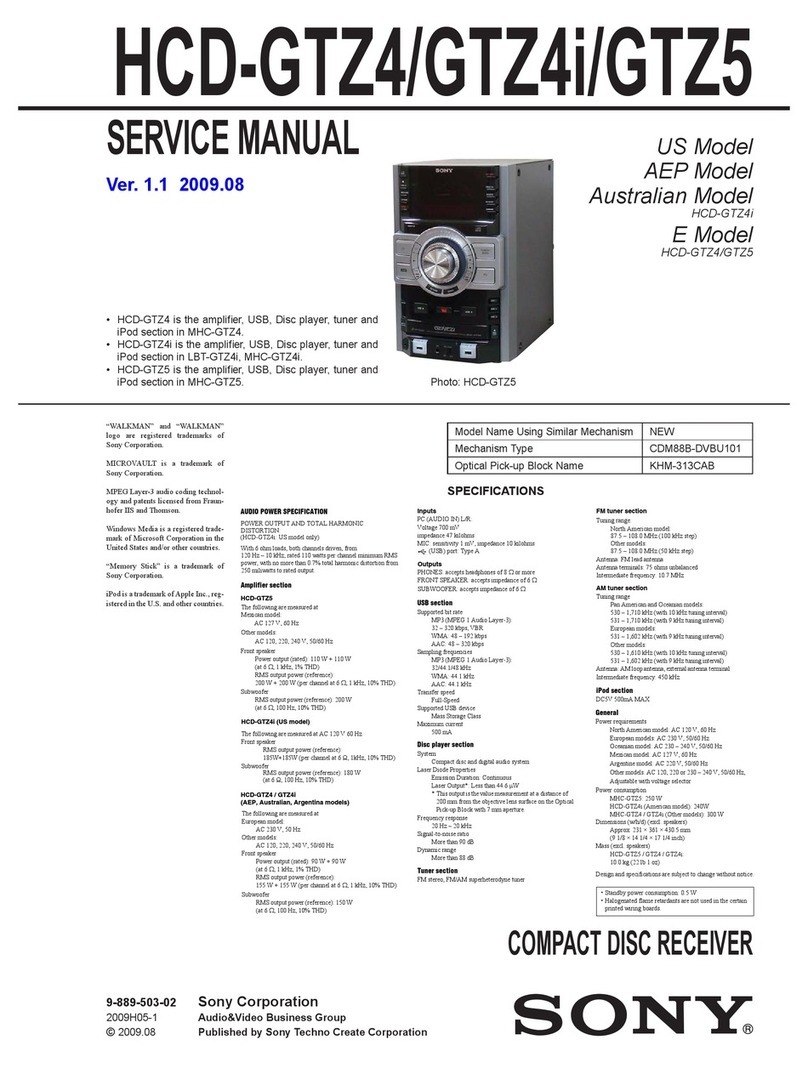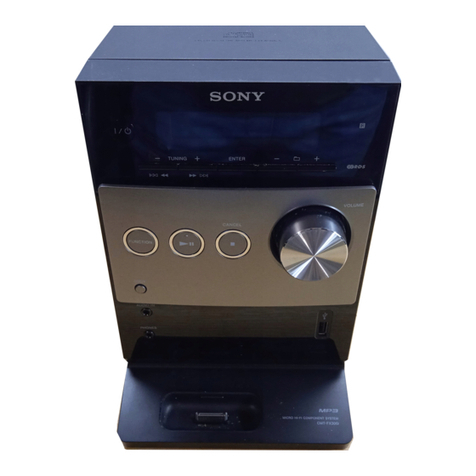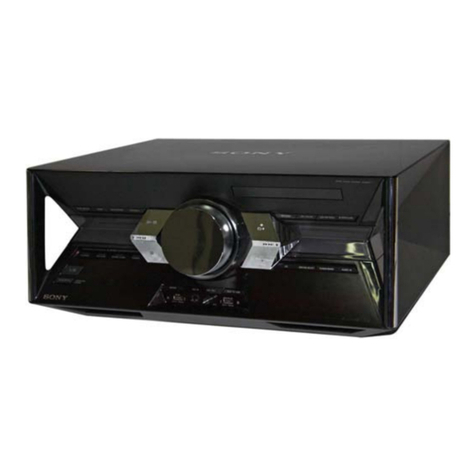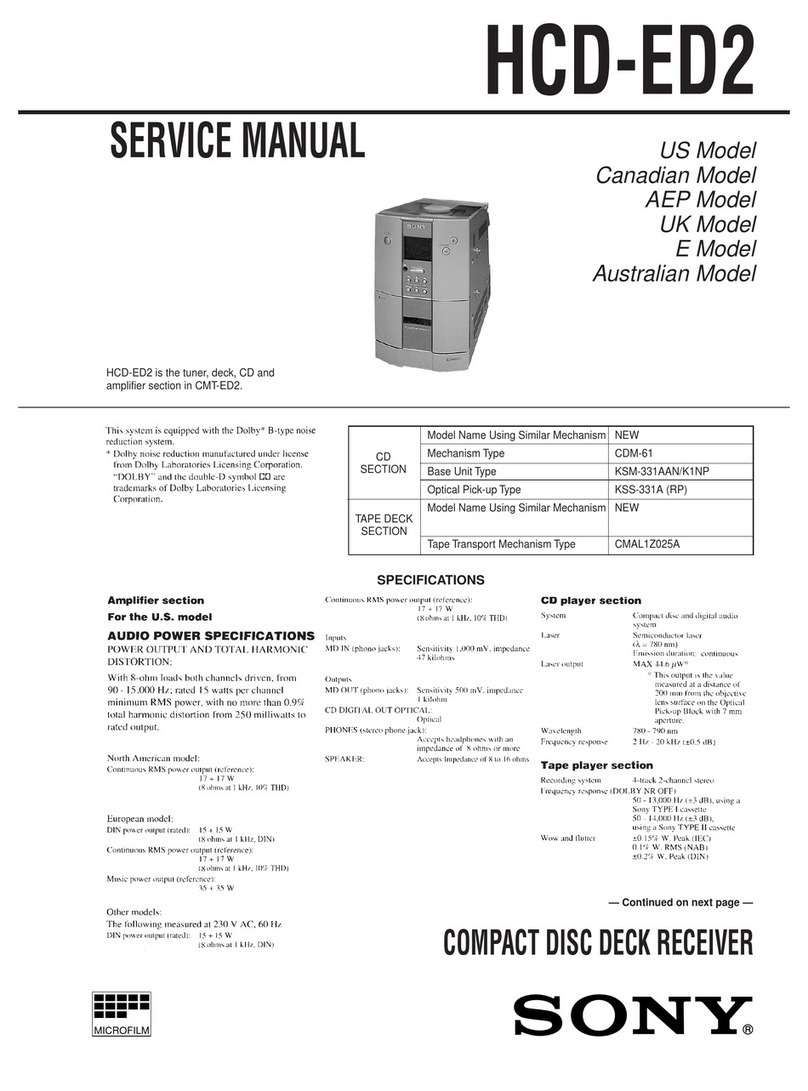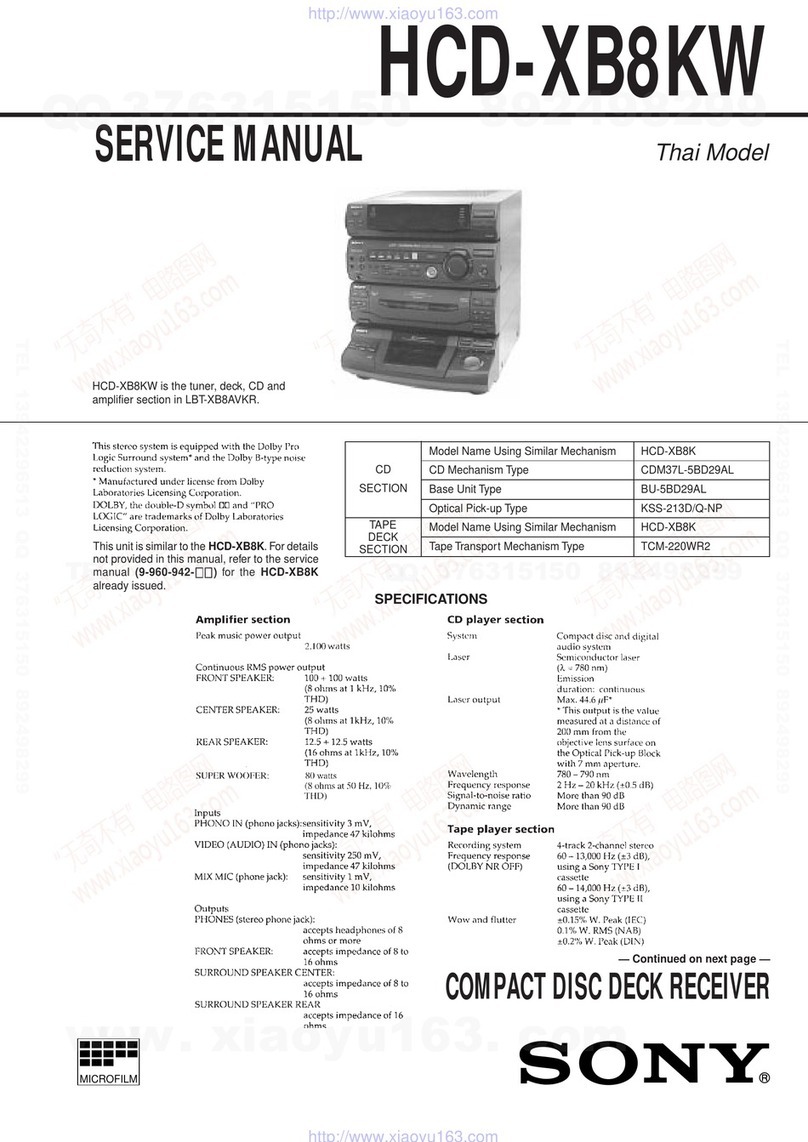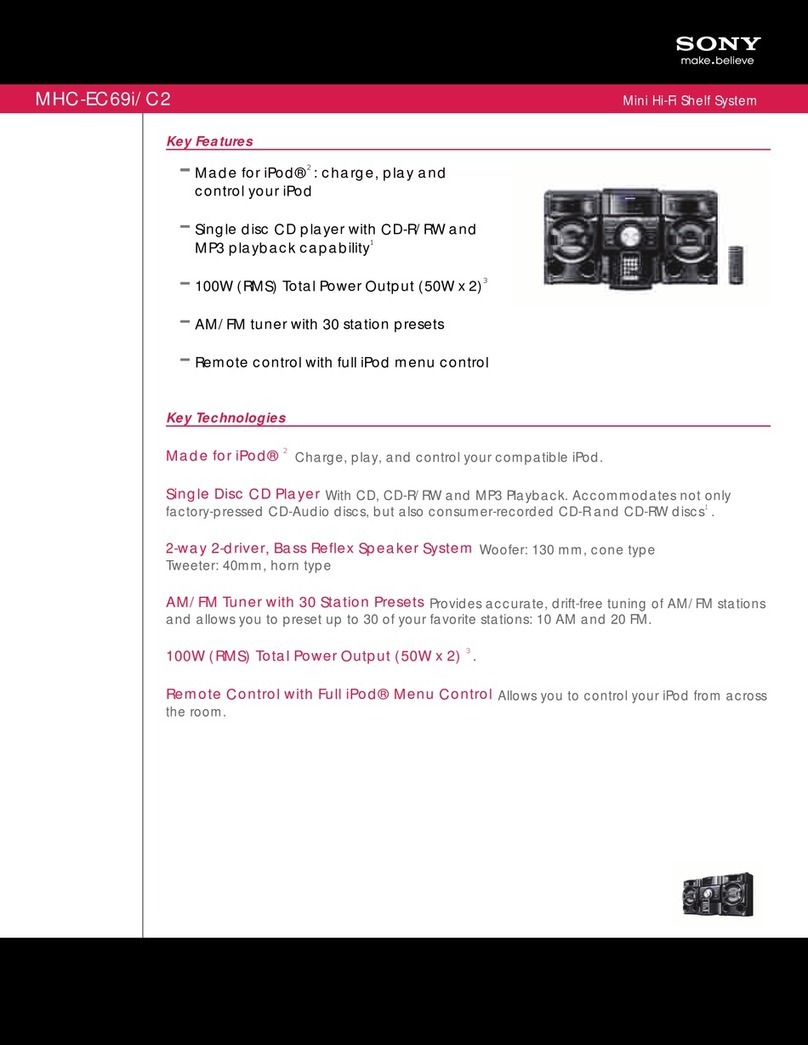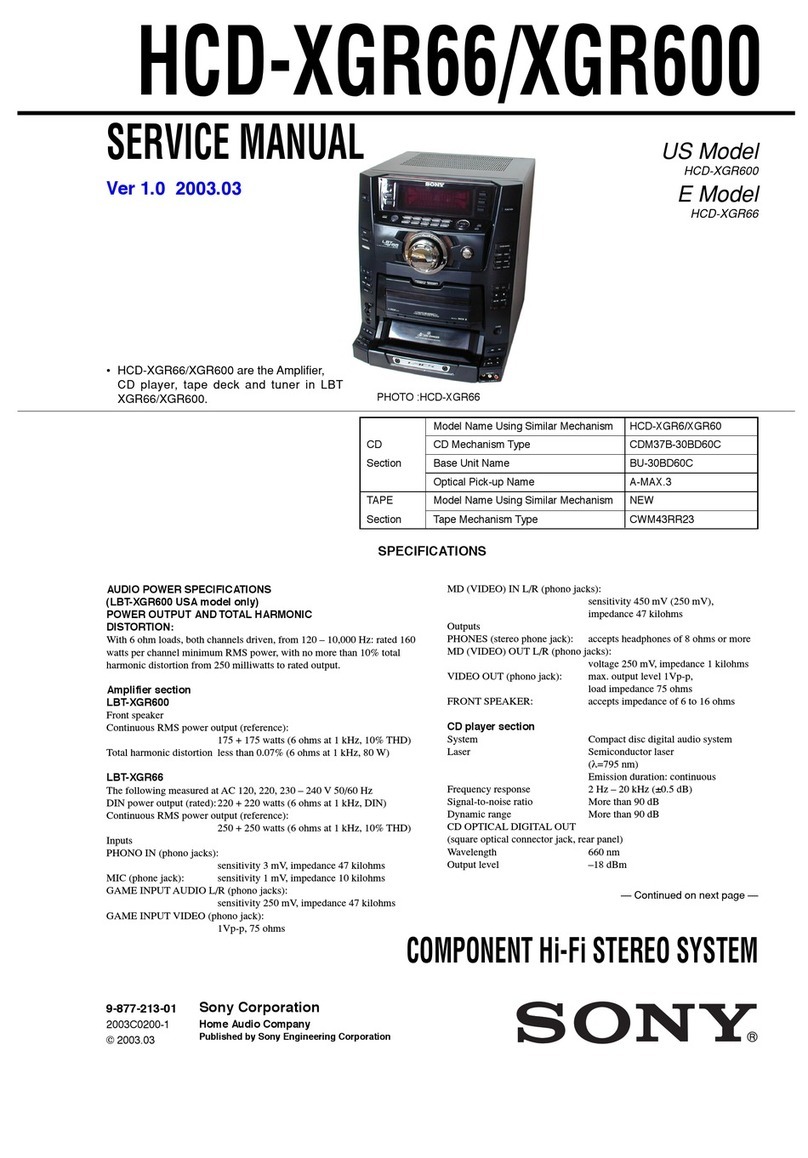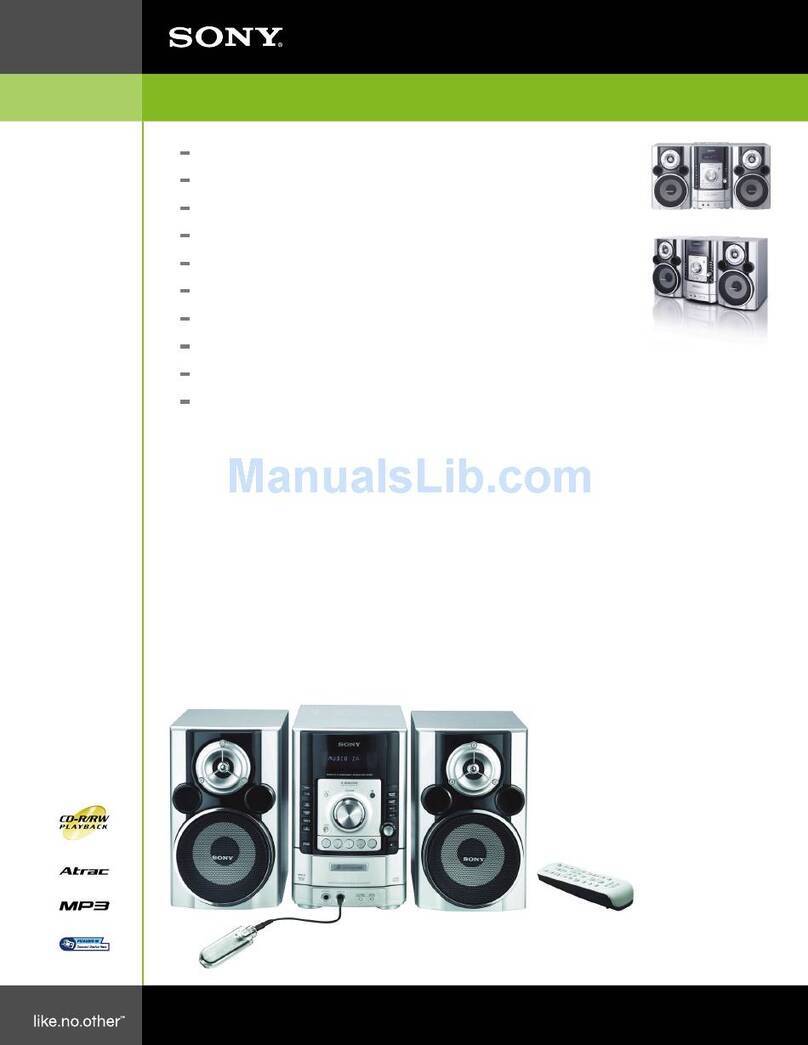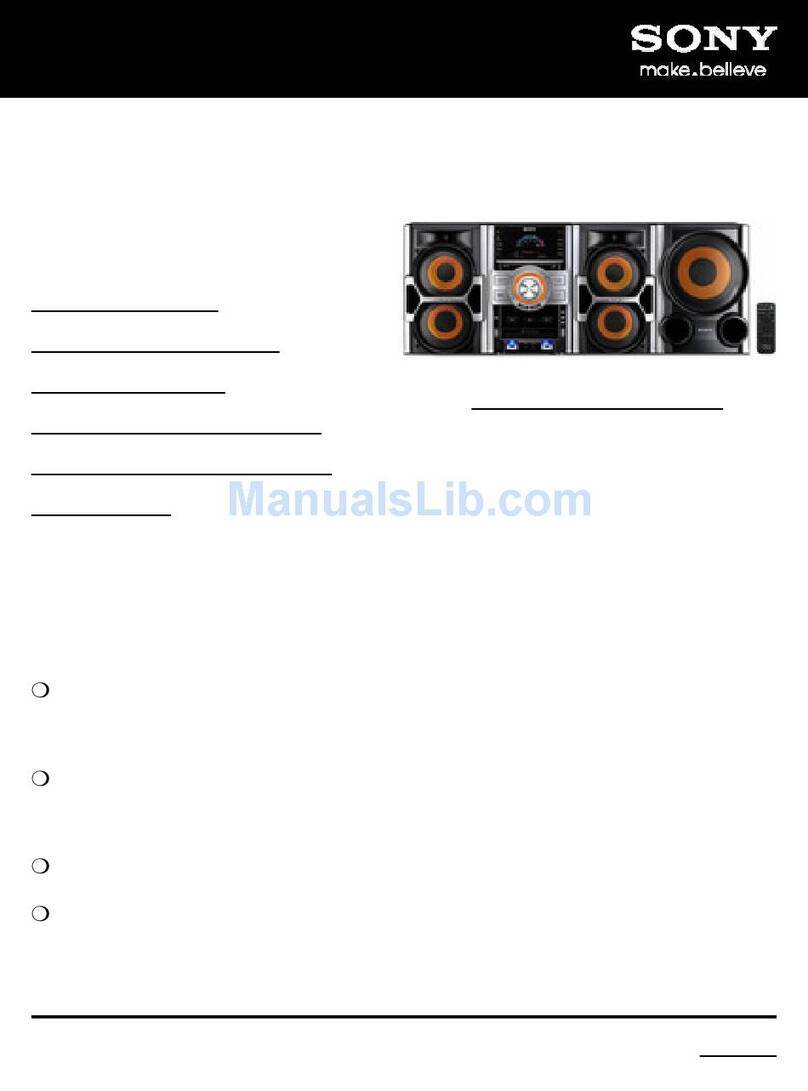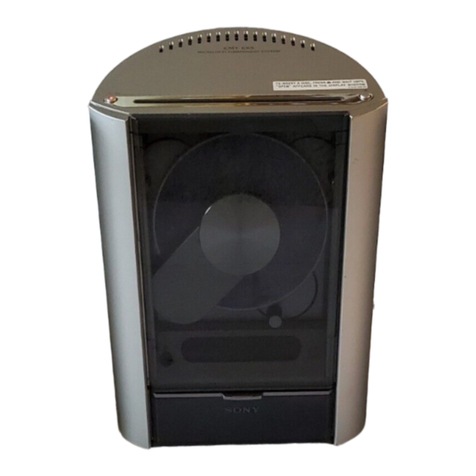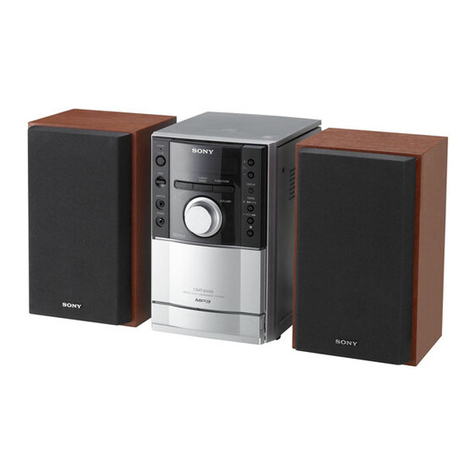
2
AM tuner section
Tuning range
European model: 531 –1,602 kHz
(with the interval set at 9 kHz)
Other models: 531 –1,602 kHz
(with the interval set at 9 kHz)
530 –1,710 kHz
(with the interval set at 10 kHz)
Antenna AM loop antenna
External antenna terminals
Intermediate frequency 450 kHz
General
Power requirements
U.S.A. and Canadian models:
120 V AC, 60 Hz
Australian model: 220 –240 V AC, 50/60 Hz
Chinese model: 220 V AC, 50/60 Hz
European model: 230 V AC, 50/60 Hz
Other models: 110 –120 V or 220 –240 V
AC, 50/60 Hz
Power consumption
U.S.A. and Canadian models:
60 watts during normal operation
Other models: 70 watts during normal operation
Dimensions (w/h/d) incl. projecting parts and controls
Approx. 215 ×147 ×326 mm
Mass Approx. 5.0 kg
Design and specifications are subject to change
without notice.
SELF-DIAGNOSIS FUNCTION
The self-diagnosis function consists of error codes for customers, which are displayed automatically when errors occur, and error codes,
which show the error history in the test mode during servicing. For details on how to view error codes for the customer, refer to the
following box in the instruction manual. For details on how to check error codes during servicing, refer to the following “Procedure for
using the Self-Diagnosis Function (Error History Display Mode)”.
Self-diagnosis Display
This system has a Self-diagnosis display function
to let you know if there is a system malfunction.
The display shows a code made up of three or five
letters and a message alternately to show you the
problem. To solve the problem refer to the
following list. If any problem persists, consult
your nearest Sony dealer.
C11/Protected
The MD is protected against erasure.
cRemove the MD and slide the tab to close the
slot.
C12/Cannot Copy
You tried to record a CD or MD with a format
that the system does not support, such as a CD-
ROM.
cRemove the disc and turn off the system once,
then turn it on again.
C13/REC Error
Recording could not be performed properly.
cMove the system to a stable place, and start
recording over from the beginning.
The MD is dirty or scratched, or the MD does
not meet the standards.
cReplace the MD and start recording over from
the beginning.
C13/Read Error
The MD deck cannot read the disc information
properly.
cRemove the MD once, then insert it again.
C14/Toc Error
The MD deck cannot read the disc information
properly.
cReplace the MD.
cErase all the recorded contents of the MD
using the All Erase function.
C41/Cannot Copy
The sound source is a copy of a commercially
available music software, or you tried to record
a CD-R (Recordable CD).
cThe Serial Copy Management System
prevents making a digital copy.
You cannot record a CD-R.
C71/Check OPT-IN
This appears momentarily because of the signal
of the digital broadcast during recording.
cThere is no affect on the recorded contents.
No component is connected to the DIGITAL
OPTICAL IN jack, or a digital component is
not connected properly.
cConnect a digital component to the DIGITAL
OPTICAL IN jack properly using a digital
connecting cable (not supplied).
The connected digital component is not turned
on.
cSee the operating instructions supplied with
the connected component and confirm
whether the component is turned on.
The digital connecting cable connected to the
DIGITAL OPTICAL IN jack is pulled out, or
the connected digital component is turned off
during digital recording.
cConnect the cable, or turn on the digital
component.
E0001/MEMORY NG
There is an error in the internal data that the
system needs in order to operate.
cConsult your nearest Sony dealer.
E0101/LASER NG
There is a problem with the optical pickup.
cThe optical pickup may have failed. Consult
your nearest Sony dealer.
MD SECTION
PROCEDURE FOR USINGTHE SELF-DIAGNOSIS FUNCTION (ERROR HISTORY DISPLAY MODE)
Note 1:About “R”
As this unit has only a few buttons, some operations require the use of remote commander (RM-S5EN/provided with unit: 1-476-086-21)
buttons. These operations are indicated as “R”in this manual.
Example: MENU/NO “R” ...Press the [MENU/NO] button of the remote commander.
Note 2:Incorrect operations may be performed if the MD test mode is not entered properly.
In this case, press the I/1button to turn the power off, and retry to enter the MD test mode.
Note 3:Perform the self-diagnosis function in the “error history display mode”in the MD test mode. The following describes the least required
procedure. Be careful not to enter other modes by mistake. If you set other modes accidentally, press the MENU/NO “R” button to exit the
mode.
Procedure:
1. Press the I/1button to turn the power on.
2. Press the [FUNCTION] button to set the MD function.
3. Press three buttons of M > , [PLAY MODE], and [MD ] simultaneously to enter the MD test mode and display “[Check]”.
4. Press the . m “R” or M > “R” button to display “[Service]”.
5. Press the ENTER/YES “R” button to display “AUTO CHECK”, and press the M > “R” button to display “Err Display”.
6. Press the ENTER/YES “R” button to enter the error history mode and display “op rec tm”.
7. Select the contents to be displayed or executed using the . m “R” or M > “R” button.
8. Press the [CD-MD SYNC NORMAL] button to light up “IT”indicator, then press the [REC MODE] button will display or execute the
contents selected.
9. Press the [REC MODE] button another time returns to step 7.
10. Press the MENU/NO “R” button displays “Err Display”and release the error history mode.
11. To release the MD test mode, press the [REPEAT] button to display “Initialize”and release the MD test mode.
Z



